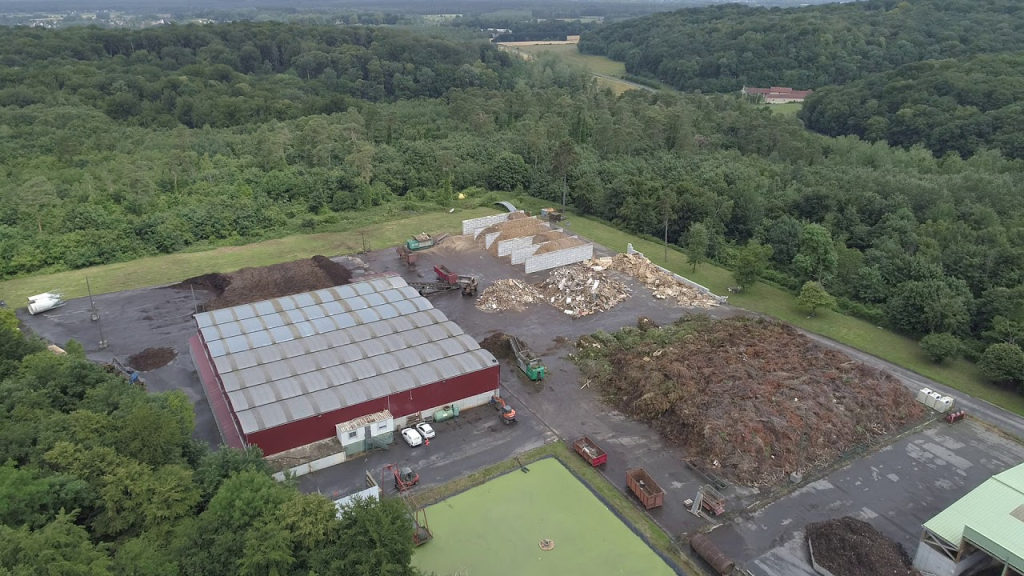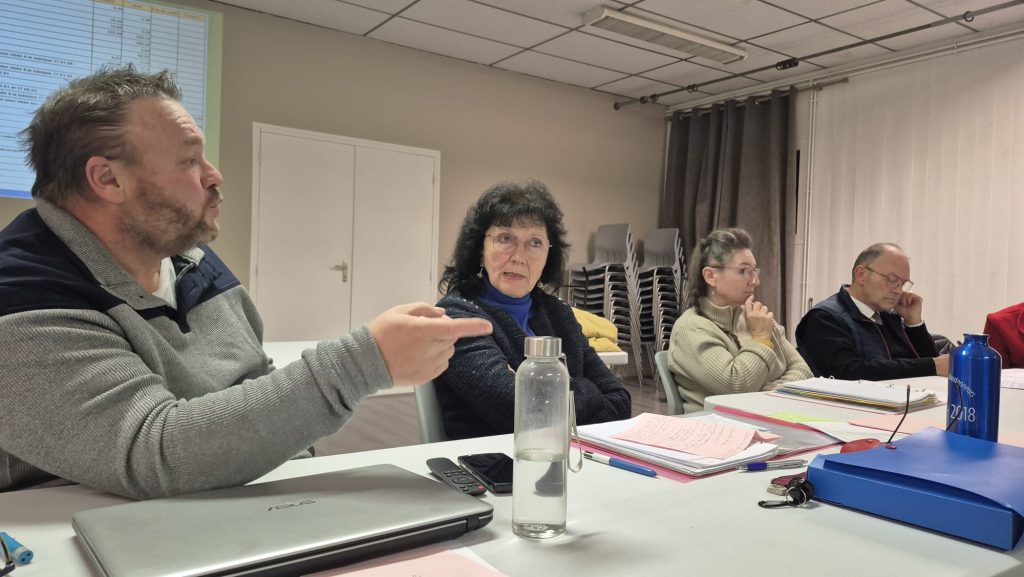[ad_1]

“Sometimes it smells like rotten cabbage.” “In the summer, when we eat outside, we have to take refuge at home.” “At night, you have to close the windows because it stinks.” In summary, whether Tracy-le-Val, Tracy-le-Mont Or Carlepontthree adjoining towns: “it stinks”, assures Hervé Lefranc, president of the association Heritage and biodiversity meetings. Olfactory nuisances which vary depending on the day and time of day, but observable “more than 100 days a year” according to the association’s volunteers.
While in the three villages, everyone has already experienced these nauseating odors, all eyes are turned towards “the dump”. In the vicinity of these three municipalities, in the neighboring territory of Moulin-sous-Touventthere SA Gurdebeke has been established for decades. The company, whose head office is located in Noyon, has operated a landfill center and a composting center. The two facilities are located 500 meters from each other.
“Fight for the well-being of residents”
Friday, November 15 in the evening, in a village hall in Tracy-le-Val that was absolutely full (some people remained standing), Hervé Lefranc’s association invited the residents of the three municipalities to a presentation of their recent work. The mayors of the three municipalities are present or represented. The evening’s host, Claude Servais, introduces the meeting with this preliminary intention: “to fight for the well-being of the inhabitants”. “We have been polluted for years. By the landfill? I am convinced of it,” the mayor immediately announces to an already convinced audience, before giving the floor to the Rencontres du patrimoine et de la biodiversity association.

Itself an emanation of the collective which fought against the two openings of 2012 (losing fight), the association has done its homework. “While Guerdebeke denies being the origin of these odors noted by all, we have carried out our investigation,” announces the president. Gurdebeke, whom the association was able to meet in the presence of the prefect in the site monitoring commission (CSS) on October 2, defends himself, supported by expert opinions. “Twice a week, Gurdebeke does his own readings,” explains Hervé Lefranc. Results which do not corroborate the experience lived by the inhabitants of the three villages. Summoned in May 2023 to carry out an olfactory study, the DREAL (Regional Directorate for the Environment, Planning and Housing), “did not detect any odor on the day the inspector was present”, reads the document in hand, at the meeting, Véronique Canal, member of the association. Questioned by the association, Gurdebeke has so far shifted the blame “toward external causes, such as the spraying of farmers,” explains its president. “But the odors do not correspond to the spreading schedules,” assures Rencontres du patrimoine et de la biodiversity, which carried out its investigation.
Gurdebeke detects nothing, residents suspicious
This dissonance between the “catastrophic summer” of a few months ago which revived residents’ interest in the issue, and the observations of the DREAL or the Gurdebeke controls, arouses the suspicion of the association. “The laboratory which carried out the DREAL assessment is the same as the one which takes the readings on behalf of Gurdebeke every week”, notes for example Hervé Lefranc.
While a new meeting is planned for the end of December, in the presence of all parties, under the patronage of the sub-prefect, the association sought to counter Gurdebeke’s upcoming arguments. By setting up a real “nose network”: referents appointed by the association, including some of its members, responsible for reporting each time a bad smell is detected. They note the time, the place, the power of the wind (if possible) and must also evaluate the power of olfactory nuisances on a scale of 1 to 10. With this method, the association has listed dozens and dozens of ‘events. And depending on where you live, the “readings” are different. “In Tracy-le-Val, a priori, the odors come more from the landfill center, for 80%, the remaining 20% from the composting center,” we assure you in the village. “It’s exactly the opposite in Carlepont,” underlines Sandrine Faugeron, deputy at Carlepont. Having become “olfactory experts”, the residents “are able to distinguish odors depending on where they come from”, they assure.
Now what to do? First “put pressure on the sub-prefect”, to “shake up DREAL” whose inertia was denounced during this evening. Then continue to organize. “The mayors agree to set up a toll-free number to list all the phenomena observed,” announces Claude Servais. It is planned to produce a summary which will be sent every week or every month to the sub-prefect. “He will be forced to act,” believes the mayor of Tracy-le-Val. Others suggest flooding social networks with testimonials, and increasing online complaints to the DREAL.
“If you smell, there is air pollution”

If the situation is taken seriously, “it’s because it’s not just bad smells,” warned Nicole Gaste. The one who led a similar fight, but in neighboring Aisne, came to share her experience. “If you smell, there is air pollution. And so: what exactly is in this landfill? Why does it disperse on a particular day at a particular time? This is what you need to understand, perhaps by putting pressure on the public authorities to provide the installations with measuring instruments.” What if these requests are rejected? “We blocked the sites, which brought in the gendarmes, then the DREAL who took measurements,” she told the audience. The idea worries as much as it seduces.
“We are not there yet,” suggested Hervé Lefranc at the end of the meeting. The association continues to organize itself to “gather evidence” and get the ear of public authorities. And if not? Otherwise the possibility of action before the administrative courts was raised. “But we’re not there yet either,” repeats Hervé Lefranc.
We were unable to contact SA Gurdebeke
[ad_2]
Source link

